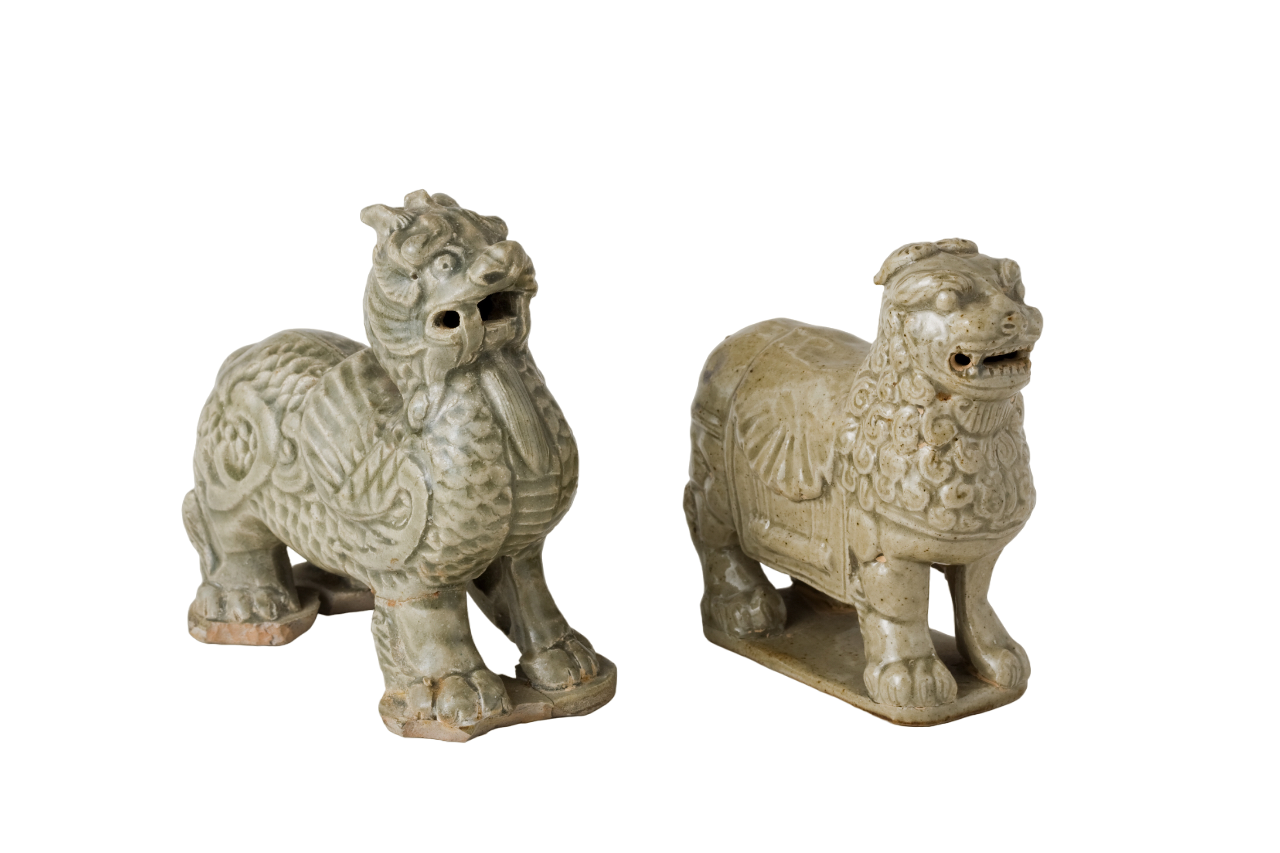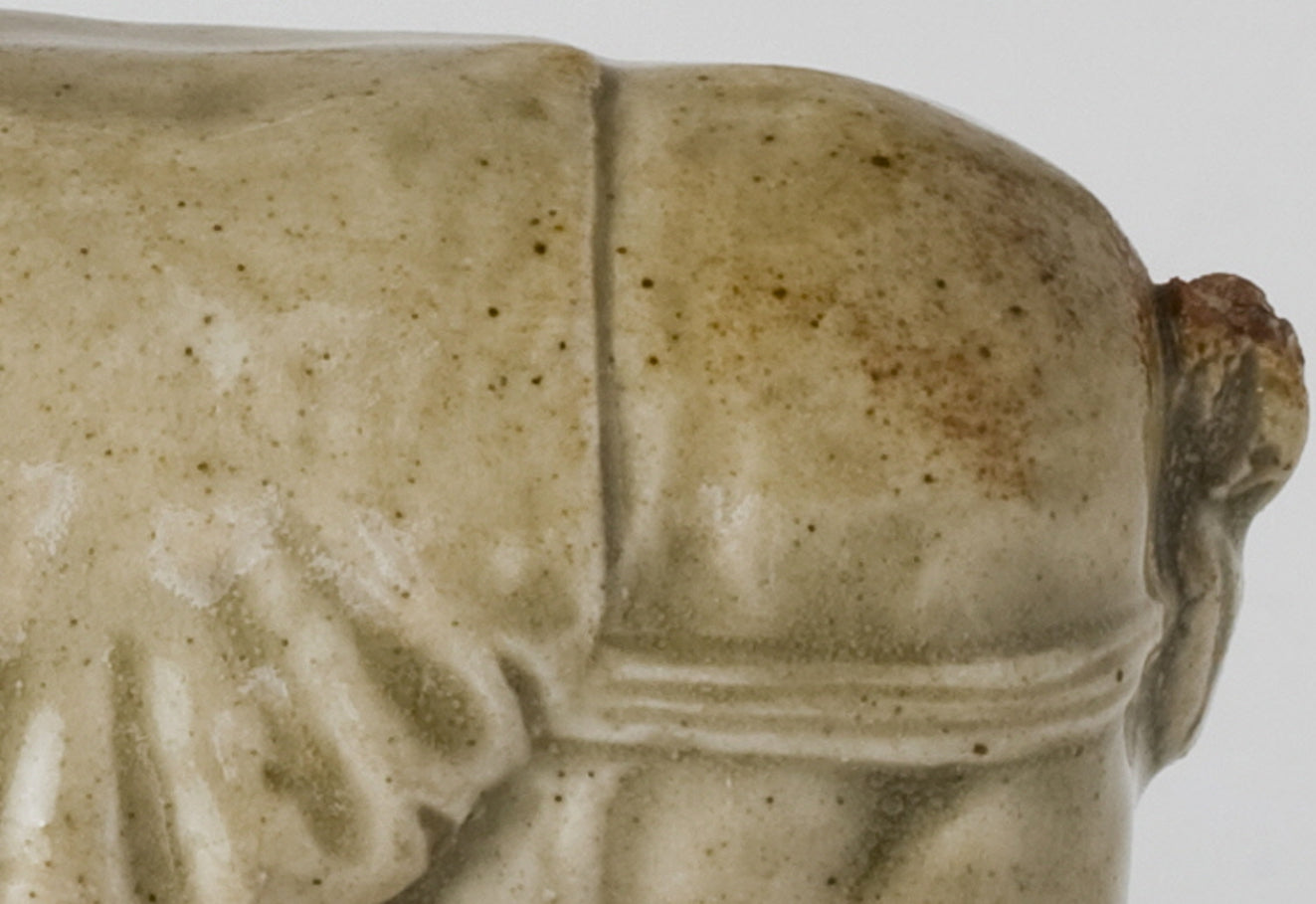AUA Oriental Art
Rare Yue Celadon-Glazed Two Haitai Statues, Western Jin dynasty (265-420)
Rare Yue Celadon-Glazed Two Haitai Statues, Western Jin dynasty (265-420)
Couldn't load pickup availability
* Set item(Two statues)
The statue on the left seems to be a mythical beast standing in a poised and alert stance, with its mouth open as if roaring or breathing fire. Its body is covered in detailed carvings that resemble scales and feathers, indicative of the high level of craftsmanship during the Jin Dynasty. The creature’s presence is both regal and intimidating, suggesting it might have been believed to possess protective properties.
The statue on the right presents a more stoic and solid stance, with a broad chest and a upright head. Its facial expression is stern, with deep-carved eyes and an open mouth that reveals its teeth, adding to its majestic and formidable appearance. The mane and other body features are intricately detailed, suggesting a high level of artistic skill in its creation.
Period : Western Jin Dynasty (266 - 316 AD)
Type : Haitai Statue
Medium : Yue celadon(Stoneware)
Diameter : 10cm
Provenance : The piece was acquired in Hong Kong in the year 1999.
Condition : Good (Left statue's leg had repaired)
Reference :
1) Christies Hongkong 6 OCT 2015 - The Pavilion Sale - Chinese Ceramics & Works of Art Lot 72
https://www.christies.com/en/lot/lot-5932310
* Yue Celadon
Yue celadon, also known as Yue ware, is a type of Chinese pottery with a celadon glaze, originating from the eastern Han dynasty (25-220 AD) in the Zhejiang province. The name 'Yue' comes from the Yue kilns which were among the earliest to develop the celadon technique. Yue ware is known for its jade-like glaze, which can range in color from bluish-green to olive green.
Yue celadon was highly regarded during its time and was the first Chinese ware to be imported in large quantities to the Middle East and Africa, significantly influencing the development of ceramics in those regions. The production of Yue ware continued to evolve, and during the Tang dynasty (618-907 AD), it became more refined with more complex shapes and decorations. By the time of the Song dynasty (960-1279 AD), it had greatly influenced other kiln traditions, leading to the development of the classic longquan celadon, which became one of China’s most famous ceramic products.
Yue celadon traditionally embodies elements of auspiciousness and good fortune in Chinese culture. The jade-like celadon glaze is often associated with longevity and health. Various motifs and shapes inscribed on the pottery frequently symbolize luck and prosperity. For example, lotus patterns may represent purity and immortality, while animal figures like the lion symbolizes power, courage, and strength. Lions are considered protectors that ward off evil spirits and bring forth good luck. Furthermore, Yue celadon wares were commonly used as tomb offerings in ancient China, believed to bring fortune and well-being to the deceased in the afterlife.


















